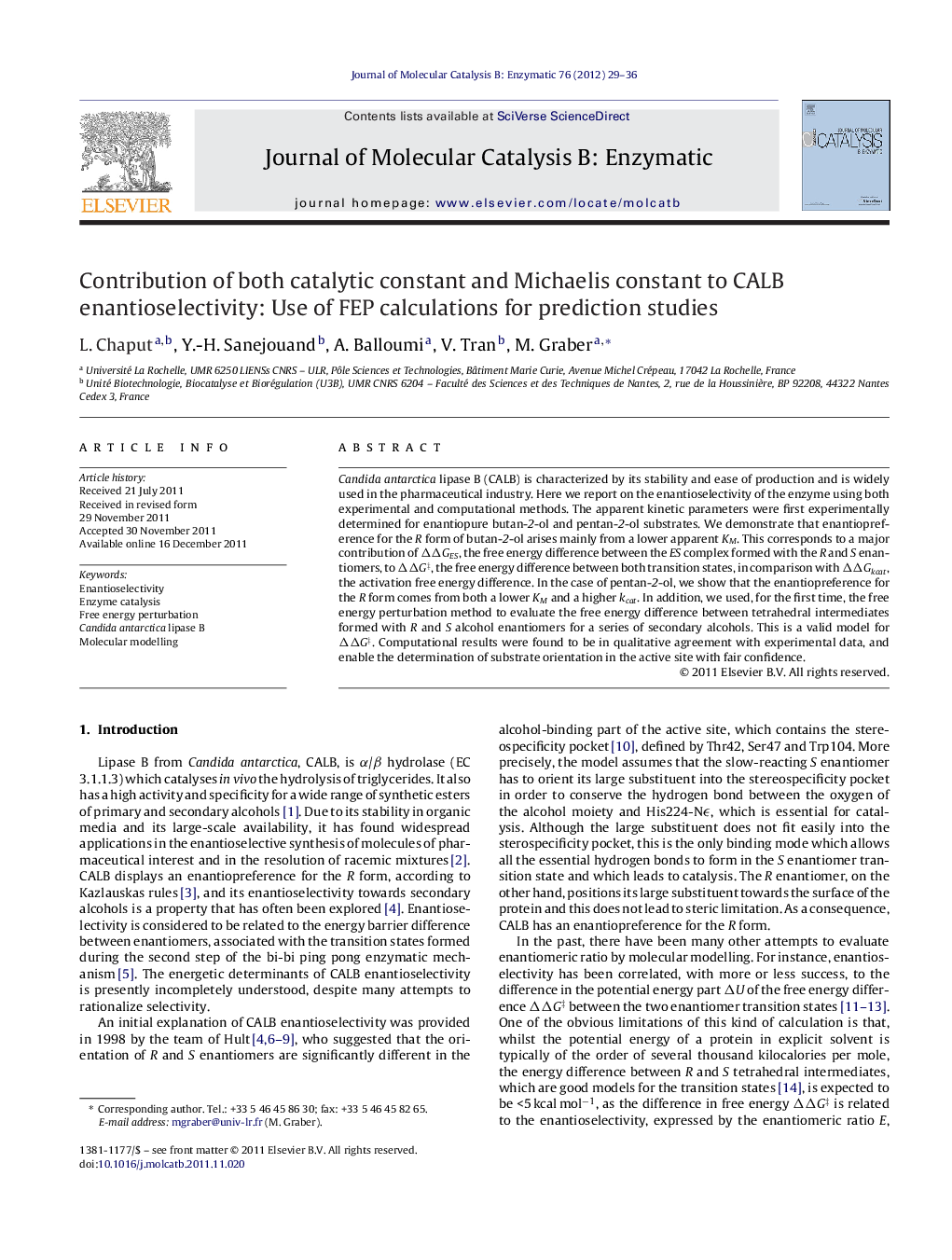| Article ID | Journal | Published Year | Pages | File Type |
|---|---|---|---|---|
| 70040 | Journal of Molecular Catalysis B: Enzymatic | 2012 | 8 Pages |
Candida antarctica lipase B (CALB) is characterized by its stability and ease of production and is widely used in the pharmaceutical industry. Here we report on the enantioselectivity of the enzyme using both experimental and computational methods. The apparent kinetic parameters were first experimentally determined for enantiopure butan-2-ol and pentan-2-ol substrates. We demonstrate that enantiopreference for the R form of butan-2-ol arises mainly from a lower apparent KM. This corresponds to a major contribution of ΔΔGES, the free energy difference between the ES complex formed with the R and S enantiomers, to ΔΔG‡, the free energy difference between both transition states, in comparison with ΔΔGkcat, the activation free energy difference. In the case of pentan-2-ol, we show that the enantiopreference for the R form comes from both a lower KM and a higher kcat. In addition, we used, for the first time, the free energy perturbation method to evaluate the free energy difference between tetrahedral intermediates formed with R and S alcohol enantiomers for a series of secondary alcohols. This is a valid model for ΔΔG‡. Computational results were found to be in qualitative agreement with experimental data, and enable the determination of substrate orientation in the active site with fair confidence.
Graphical abstractFigure optionsDownload full-size imageDownload as PowerPoint slideHighlights► CALB enantioselectivity is dependant to various degrees on both KM and kcat . ► CALB displays a preference for R enantiomers in a free energy perturbation study. ► Origin of CALB enantioselectivity and substrate orientation explored.
